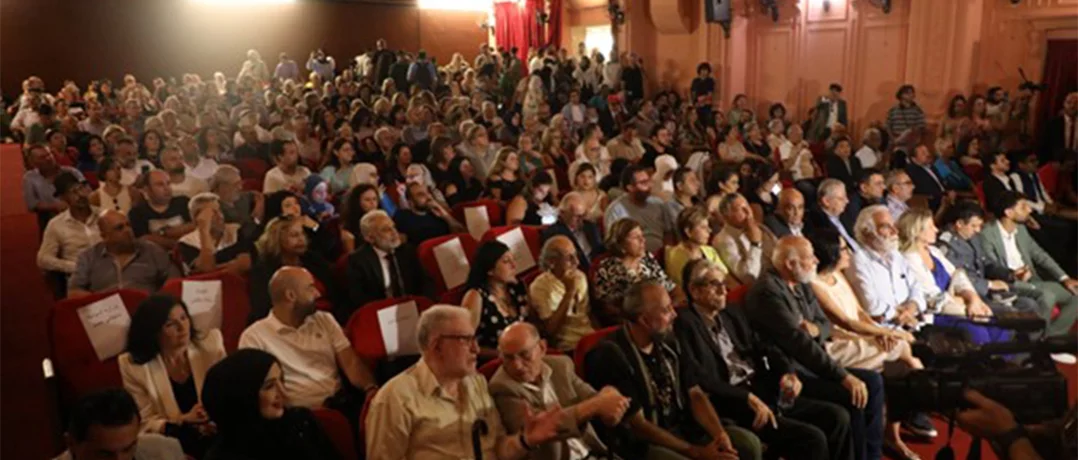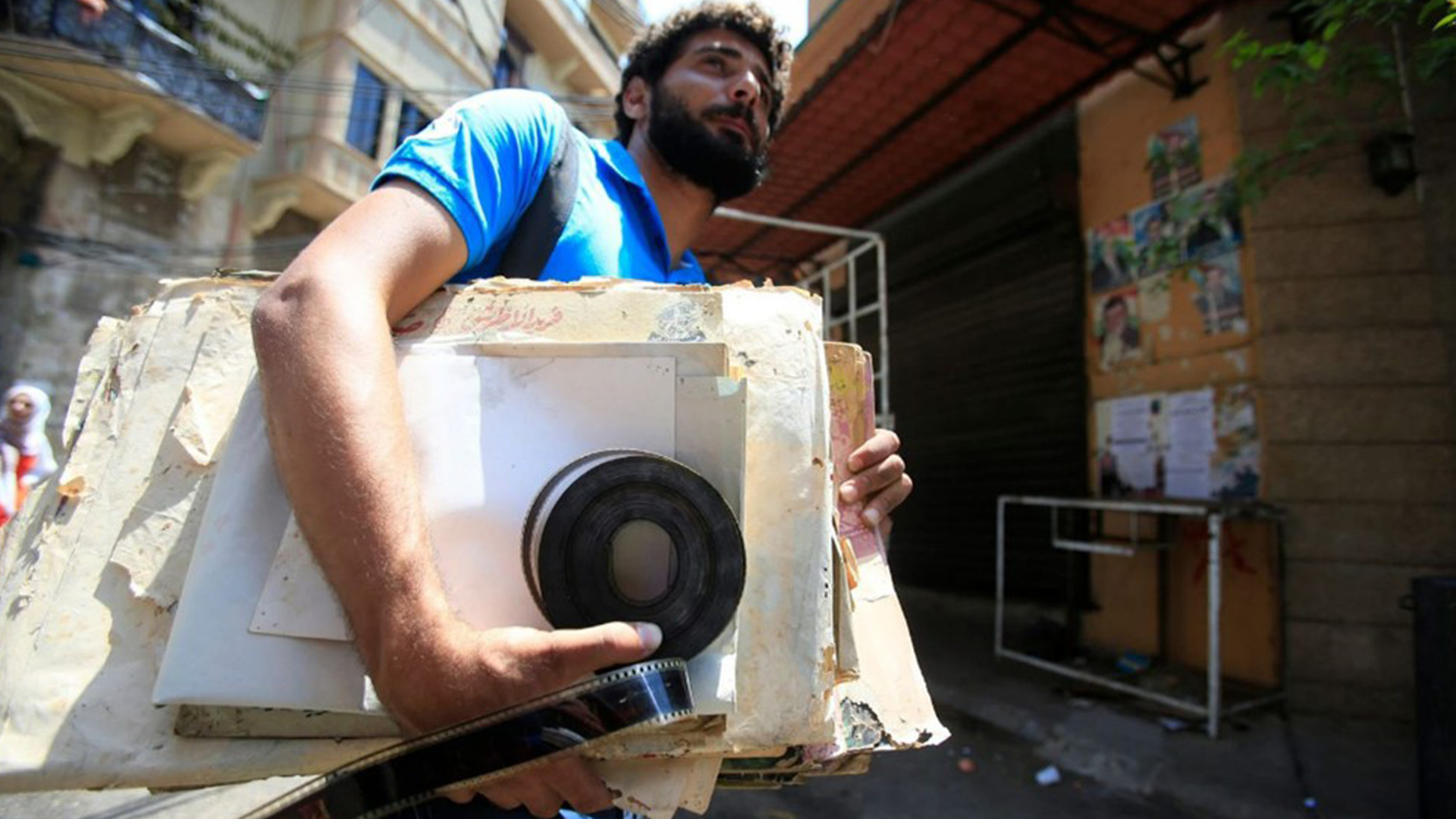From Tyre to Hamra: Kassem Istanbouli’s dream of a people’s cinema
From Tyre to Hamra: Kassem Istanbouli’s dream of a people’s cinema


On September 13, 2025, the lights of Hamra’s Colisée Cinema shone again. Built in 1945, the Colisée had once been a jewel of Beirut’s golden age of film and theater. After decades of silence, its marquee returned to life, not just as a cinema, but as the newest home of the Lebanese National Theater, under the vision of actor, director, and cultural activist Kassem Istanbouli.
The reopening was more than a nostalgic restoration. It marked another chapter in a cultural movement that had been quietly reshaping Lebanon for nearly two decades, turning abandoned halls into public spaces where art belonged to everyone.
A first encounter
My first memory of this movement dated back to Tripoli’s Ampere Cinema. I hadn’t gone there as a spectator but as a volunteer. The hall was vast, its rows of broken chairs standing like ruins, the wide stage stretching silent before us. Someone handed me a brush, and I joined others in coating the chairs with paint. The smell of dust mixed with fresh color, and laughter echoed in the hollow space.
It felt as though we were reviving more than an old cinema, we were reviving a piece of the city’s soul. That was the essence of what Istanbouli had set in motion: a dream that began small but kept growing.
From Tyre to Beirut
“Regarding the cinema, it was a dream that started in Tyre,” Istanbouli said. “We opened a small stage; it was called the Istanbouli Stage. Then we renovated Hamra Cinema, later Cinema Stars in Nabatieh, then Rivoli in Tyre, Ampere Cinema in Tripoli, and now Colisée in Beirut.”
At every step, the purpose was clear: to conserve Lebanon’s cultural heritage and to create spaces where art was accessible to all. “We had a cause, to open cultural spaces for people, to preserve this social memory and connect past, present, and future,” he said.
Through the Tiro Association for Arts, founded by Istanbouli, five cinemas across Lebanon reopened their doors. Each carried its own identity: Rivoli in Tyre became the country’s first free national theater, Nabatieh’s cinemas hosted workshops and festivals, Tripoli’s Ampere reunited divided communities, and Beirut’s Colisée reclaimed its place in cultural memory.
 Kassem Istanbuli during one of his cinema renovations. Photo Credit: Kassem Istanbuli.
Kassem Istanbuli during one of his cinema renovations. Photo Credit: Kassem Istanbuli.
Art as a right
At the heart of Istanbouli’s mission was a simple but radical belief: art was for everyone. “The Lebanese National Theater means the people’s theater,” he said. “It is a place where both rich and poor can enter, where students can watch films, and where people with special needs can take part in workshops. We revived the idea that art is a right, not a privilege.”
This philosophy also challenged Lebanon’s cultural centralization. “Twelve years ago, everything was in Beirut,” he said. “But now this is broken. We were able to create change in other areas too. The movement grew because others also believed they could make change in the place they were in.”
A struggle against ruin
Turning ruins into theaters was never easy. Abandoned cinemas meant collapsed ceilings, destroyed seats, and decades of neglect. “It is not easy,” Istanbouli admitted. “There are exhaustion, risk, and struggle at every level. To go into an abandoned cinema is to face destruction and chaos, even danger for the working team. This should be a governmental project, but instead it is carried by passion and faith.”
Even in war and crisis, the theaters stayed open. “It is important to say the theater didn’t only open in peace, but also during war,” he said. “In Tyre and Tripoli, even in the worst times, the theater was open for people for free and still is. Why do we create art? To serve the people. That is what this project has proven.”
Festivals and buses
The Colisée’s reopening coincided with the Lebanon International Theater Festival, held from September 13–15, which featured performances from Spain, Iraq, Syria, Germany, Palestine, and Lebanon. Its slogan, “As long as there is life, there will be theater”, echoed Istanbouli’s conviction.
Beyond Hamra, Tiro’s touring bus brought cinema to villages, while festivals in Tyre and Tripoli connected artists across regions. “Culture is built only by solidarity and cooperation,” he said. “When an artist comes to one stage, and then another, the work extends from Tripoli to Tyre to Beirut. We don’t build culture alone. Every cinema has its own soul and its own community defending it.”
Toward sustainability
One of the challenges ahead was sustainability. “We aim to run the Beirut theater in an almost free way,” Istanbouli explained. “People who can pay for tickets or rent the hall will do so, but for those who cannot, the theater will still be open. This is the integration I want.”
Funding also came from craft workshops with women, exhibitions, café spaces, and ticket sales. In Tripoli, there was already “a cinema every day, a movie every day,” he said proudly. Beirut was now following that path, with the goal of stability first, then expansion.
A collective soul
For Istanbouli, the Lebanese National Theater was never just a building but a symbol of unity. “This theater is a smaller version of Lebanon,” he said. “It cancels differences. It tells people we are united by one language: humanity, creativity, art.”
In Tyre, the motto had been “cultural resistance.” In Tripoli, it was “theater unites us.” In Beirut, the Colisée declared: “art is our voice.”
For those of us who once picked up brushes to paint broken chairs, these words resonated deeply. To restore a cinema was to restore more than walls and seats, it was to restore possibility, community, and memory.
On Hamra Street, where neon once glowed with the names of films and stars, the lights had returned. And with them, a reminder: as long as there was life, there would be theater.


.webp)